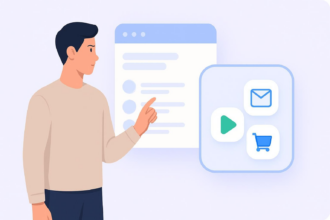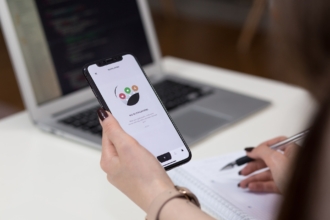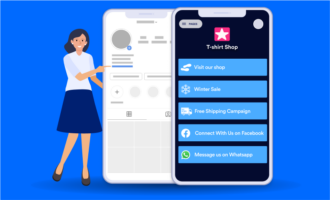If you build it, they will come.
That famous line (or misquote) from the 1989 film Field of Dreams has always haunted me — pun very much intended.
But by no means, just me.
Like all good things, the quote has been overused, parodied, made into countless internet memes, and even sparked criticism from some. Still, after all these years, the film about an Iowa farmer hearing a mysterious voice one night and going on to build a baseball field has stayed with me.
Perhaps, because it still captures something essential. According to one Rotten Tomatoes reviewer “This is a story about passion, not just for baseball, but also a passion to do something with our one precious life even if people think it’s crazy.”
For creatives, this message rings especially true. Most photographers, writers, illustrators, and basically any creative you know, understand this call to build something using their talents.
In days past, many were often held back because they lacked the tech skills to take an idea from its early stages to full execution. A writer, for instance, would have to shell out a few thousand bucks for a simple website to showcase their portfolio.
Fast forward to the present “no-code” movement, where you don’t need to have programming skills or write even one line of code to build your metaphorical cornfield. As Liz Brody writes for Entrepreneur “With a spate of new tools that don’t require writing code, anyone can build a website, launch a mobile app, customize an e-commerce shopping experience, or even create a logo.”
Even as it’s been around for some time, at its core, no-code is rooted in the underlying belief that technology shouldn’t be a barrier to creation.
How no-code empowers creatives
If you give people tools, and they use their natural abilities and their curiosity, they will develop things in ways that will surprise you very much beyond what you might have expected.”
Bill Gates
Here’s a confession: when I first launched my company Jotform back in 2006 — creativity wasn’t necessarily on my mind. I was a coder tech nerd, after all.
But in my time as CEO, we’ve processed over 700 million forms, and something has always been abundantly clear.
Our no-code products don’t just serve startups and tech entrepreneurs. Even from the start, we began to see many creatives using our tools to empower themselves to develop their ideas. Photographers, for instance, can easily create a services contract with one of our fillable PDF templates. They don’t have to contract someone else to do this for them.
This is the main advantage of no-code — creating access for people with zero programming expertise.
If you’re an artist wanting to get the word out about your gallery opening, you can quickly create a high-resolution flyer using tools like Canva — a solution that makes it possible to bypass complicated design software, or the cost of a professional designer.
And the possibilities don’t end there. Below I would like to share three ways no-code software is changing the landscape for creatives.
1. No-code creates economic opportunity
Apart from helping creatives get the word out about their work, no-code can also help monetize creative projects.
With products like Substack, for example, writers can create their own paid newsletters for greater editorial freedom and entrepreneurial opportunities. You get access to user-friendly tools to create your own homepage features — all without the hassle of learning how to code.
According to The New York Times, “The platform appeals to some journalists partly because the news media business has been in steady decline.”
As the Covid-19 continues to wreak havoc on people’s economic security, no-code software like the above can be a way to monetize creative talents without the need to invest in expensive tech courses. You can also set all of this up in a matter of hours.
2. Eliminating hassle breeds more creativity
“As we become a more technological society, we also become a more creative society,” writes columnist Greg Satell for Forbes, “because many of the rote tasks that used to take up a lot of our time and effort have become automated.”
He adds: “What’s more, technology increases our potential to engage in the types of experiences that lead to greater creativity.”
I agree with Satell in that I believe creativity needs time and space to grow. By automating systems with no-code tools, people are free to pursue their creative ambitions rather than deal with the trouble of trying to figure out complicated software.
A budding illustrator can feel empowered to start marketing and selling their designs on Shopify. They don’t have to draw up a lengthy business plan, wait months to have a website up and going, or even employ a team. Instead, they can use their time and resources for coming up with innovative designs.
3. Demystifying technology builds momentum
I know this may not sound exciting at first glance, but one of the things I’ve found most fulfilling about spending over a decade building no-code products is watching people’s ingenuity unfold in real time. Many will start building upon their ideas from scratch, customizing every inch of a form until they’ve come up with something entirely original.
I believe no-code unlocks this momentum.
By democratizing software, nascent creatives can develop their hidden potential; and those who are at a more advanced stage can scale at a level they never even imagined. They’re able to build momentum because their focus and energy aren’t dragged down by technological barriers. They don’t need to learn code or depend on engineers before they can start building.
The bottom line: When you give people access, they don’t just listen to that voice urging them to create — they become unstoppable.






































































































Send Comment: